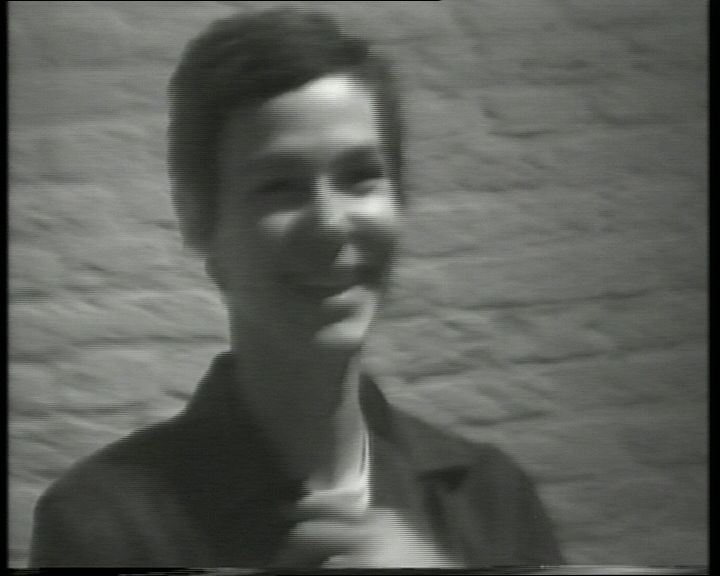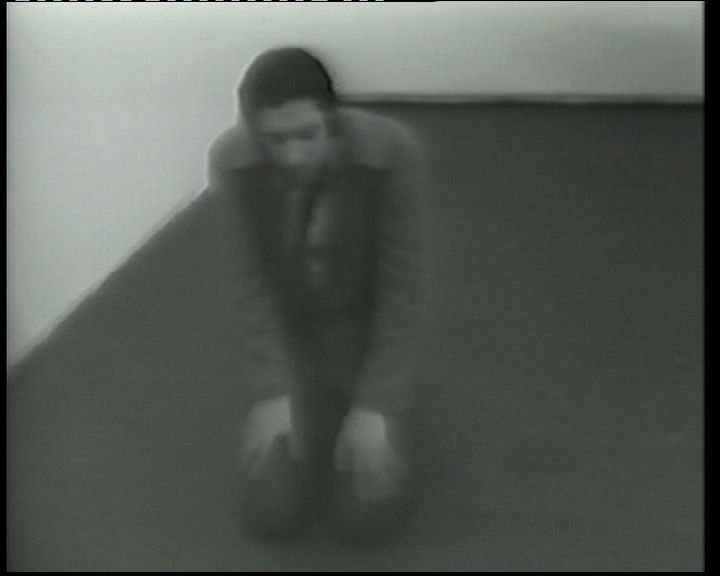Charlemagne Palestine
A composer and performer, from the late sixties Charlemagne Palestine has explored the manifold possibilities of those particular sounds produced by the performer’s body, conceiving it as an instrument and medium of resonance both to interior and external space. In order to bring to light the body’s inner resonances, the artist has focused on different modalities of communication with the public.
Palestine documents his process with an original production of videos, which underline and incarnate his various experiments, together with the always creative use of the video camera, which acts as an interpreter rather than a mere neutral recorder of events.
Some of Palestine’s most distant sound memories—his singing experiences in a synagogue choir—became the basis for a research carried out through a vast musical and audiovisual production. Experiences successively acquired at St. Thomas Church in New York led him to the universe of Oliver Messiaen and John Cage. The new conception of sound he developed, its presence, its duration and expression grew more intensely physical, almost visceral, and was to lead the artist to pipe bells and church organs, on which he created the Spectral Continuum Drones, vast sound frescoes. As in his other compositions, sound is never a simple musical product but the manifestation of a profound interior condition and attention.
Influenced by the New York artistic avant-garde, and above all by painters such as Mark Rothko, Barnett Newman, and Clyfford Still (and also by composers like the Indian singer Pandit Pran Nath), Palestine’s research has investigated the way in which sounds take on form and volume in space, arriving at altering the modalities of perception. Movement and sound in their relation to the voice and the body become the vehicles with which the artist produces and releases internal energy. In his video works, there emerges an all-involving and embracing ritualistic component that causes vocal expressions—hypnotic songs, tones, and background music that almost induce a state of trance—to become the modes that characterize the atmosphere and character of every performance. Similarly, the video camera, understood and used as the extension of the body, follows and emphasizes the same immersion in the reality of the performance as it unfolds.
Running frenetically, fixing one’s gaze on the cabin of a roller-coaster or on a moving motorcycle are some of the examples that characterize this continuous challenge regarding perceptive possibilities. The subjective viewing point encourages the observer’s involvement. [F.B.]
List of Works
Body Music I, 1973
video, black and white, sound, 10 min.
Purchased with the contribution of the Compagnia di San Paolo
Realized with Art/Tapes/22 in Florence, this video together with the successive one are performance-exercises. Seated on the floor in a room the artist almost ritualistically and rhythmically beats his knees against the surface of the floor. As the “chant” quickens, he gets up and violently throws himself against the walls, as if trying to escape from the imprisonment of that space.
Body Music II, 1974
video, black and white, sound, 10 min. 30 sec.
Purchased with the contribution of the Compagnia di San Paolo
Palestine wanders around the labyrinthine rooms of an old villa, recording with a video camera in his hand. Moving more and more quickly and singing in the reverberating space of the rooms he creates a force equivalent to the frenetic waste of physical energy as he runs.
Four Motion Studies, 1974
video, black and white, sound, 13 min. 24 sec.
Purchased with the contribution of the Compagnia di San Paolo
Filmed with a camera in his hand on the rides and roller-coasters at Coney Island, these studies are experimented by the public through the eyes and movements of Palestine during the shootings. Each study becomes more abstract, transmitting a sense of vertigo and estrangement in space.
Snake, 1974
video, black and white, sound, 10 min. 43 sec.
Purchased with the contribution of the Compagnia di San Paolo
With a ritualistic approach Palestine uses the body as an instrument for creating sounds and movements. Placed in a fetal position, the artist lies on the floor. With every breath he produces a profound sound and slowly turns himself in a circle. In this way, he creates an exercise in which his voice acts as a source of motion.
Internal Tantrum, 1975
video, black and white, sound, 7 min. 35 sec.
Purchased with the contribution of the Compagnia di San Paolo
Seated in front of the video camera the artist keeps his body in tension. Slowly he begins to sing and sway as if to communicate a sense of irritation and pain.
Running Outburst, 1975
video, black and white, sound, 5 min. 56 sec.
Purchased with the contribution of the Compagnia di San Paolo
Palestine sings inside a loft. He quickly moves among small animals made of cloth that are scattered about the room. On having reached an almost hysterical intensity, he gradually returns to a calmer movement, employing the subjective camera.
You Should Never Forget the Jungle – St. Vitas Dance, 1975
video, color, sound, 19 min. 59 sec.
Purchased with the contribution of the Compagnia di San Paolo
You Should Never Forget the Jungle, 1975
video, color, sound, 11 min. 09 sec.
The artist in a closed room wears a scarf and holds a glass of cognac in his hand. He begins to sing, grow angry, and throw himself against the walls as if trying to get out of the room.
St. Vitas Dance, 1975
video, color, sound, 8 min. 50 sec.
Seated in front of a grouping of little teddy bears, dolls, scarves, and foulards, the artist tightly holds the video camera against his body. The artist’s presence is indicated only by his shadow, while his voice sings.
The filmed images become increasingly agitated, visceral, true physical extensions of his intense gesture to the point of arriving at abstract forms of sheer movement.
Andros, 1975–1976
video, black and white, sound, 57 min. 13 sec.
Purchased with the contribution of the Compagnia di San Paolo
Filmed entirely from a subjective viewing point, this intense external and spiritual journey begins with a man looking at television in a dark room and talking about his laziness, his sense of frustration and anguish. He then goes out onto the street, takes the subway, and arrives at a place enveloped by fog. He starts to run. He then begins talking and shouting to himself and to the spectator about his need to flee from his pain and the thoughts that obsess him.
Island Song – Island Monologue, 1976
video, color, sound, 31 min. 34 sec.
Purchased with the contribution of the Compagnia di San Paolo
Island Song, 1976
video, color, sound, 16 min. 29 sec.
Filmed on an island in Hawaii, the video shows the artist who, having attached the video camera to a motorbike, travels in search of a way out. His song is mixed with the incessant roar of the engine, superimposing the shaking of the video camera. The video ends—like the artist’s trip—with the close-up of rocks on a beach.
Island Monologue, 1976
video, color, sound, 15 min. 05 sec.
Palestine tries to escape from the island on which he finds himself. Enveloped by thick fog, this becomes the symbol of the psychological reclusion the artist tries to overcome. In hiding himself or trying to see beyond the fog, he talks about his own exasperation. He then moves close to the tower of the lighthouse, which acts as a liberating force.
Where It’s Coming From, 1977
video, black and white, sound, 56 min. 05 sec.
Purchased with the contribution of the Compagnia di San Paolo
The tape is the recording of a long conversation between Palestine and Wies Smals, at that time Director of the De Appel Foundation in Amsterdam. Palestine and Smals discuss art, analyzing works with the body, performance, the role of the video camera, who directs and how, the invasion of privacy, the implicit voyeurism, and the forms of catharsis.
Dark into Dark, 1979
video, color, sound, 19 min. 28 sec.
Purchased with the contribution of the Compagnia di San Paolo.
In a dark space, one hears the artist mutter and whisper. His eyes slowly appear, followed by his face. Palestine directly addresses the spectator with a tone that is menacing, joking, and accusatory all at the same time. From the way in which the artist moves, coming closer to or moving away from the light, the darkness becomes a metaphor of safety and security, given by ignorance and isolation, while the observer is accused of being the irritating presence that brings light.












